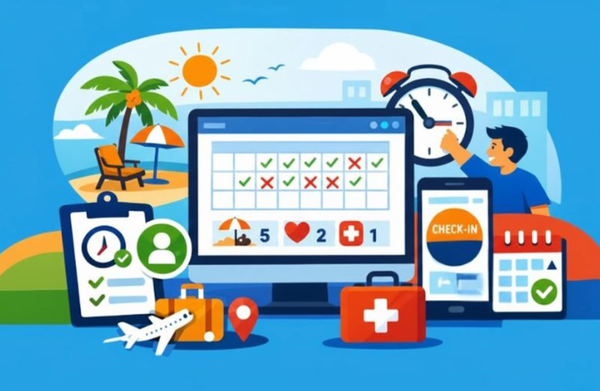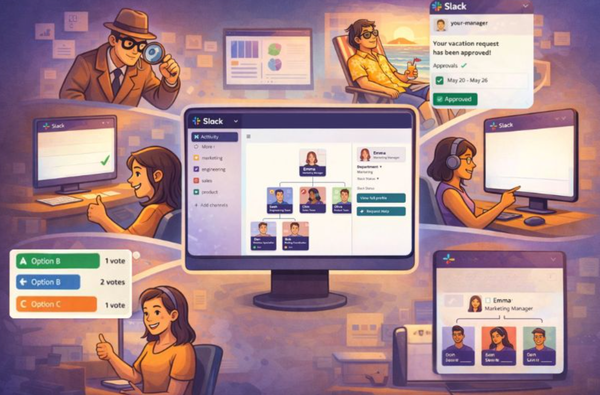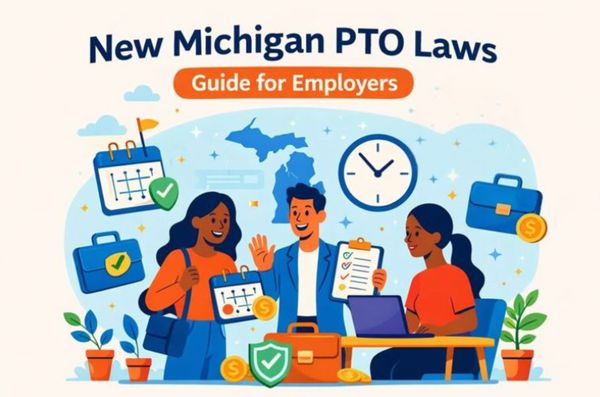A guide to one-on-one meetings: Benefits,Tips & Agenda Templates
Boost team trust, communication and productivity with effective one-on-one meetings. Explore benefits, tips, and agenda templates every manager can use.

Conducting in-person meetings can be time-consuming for managers who already have a lot on their plates, and this is often why they fall by the wayside. However, the fruit of 1:1 conversations makes them worth the time investment - if done correctly.
We discuss the benefits of 1:1s, provide you with expert tips to have productive conversations, and share agenda templates to keep you on track. Get the results you want out of 1:1s and never see them as time wasters again.
💡 Want to simplify 1:1s? Simpleperf makes it easy to schedule, track, and document every meeting on an automated schedule, saving you time and making your meetings more effective. Get your first review live in minutes.
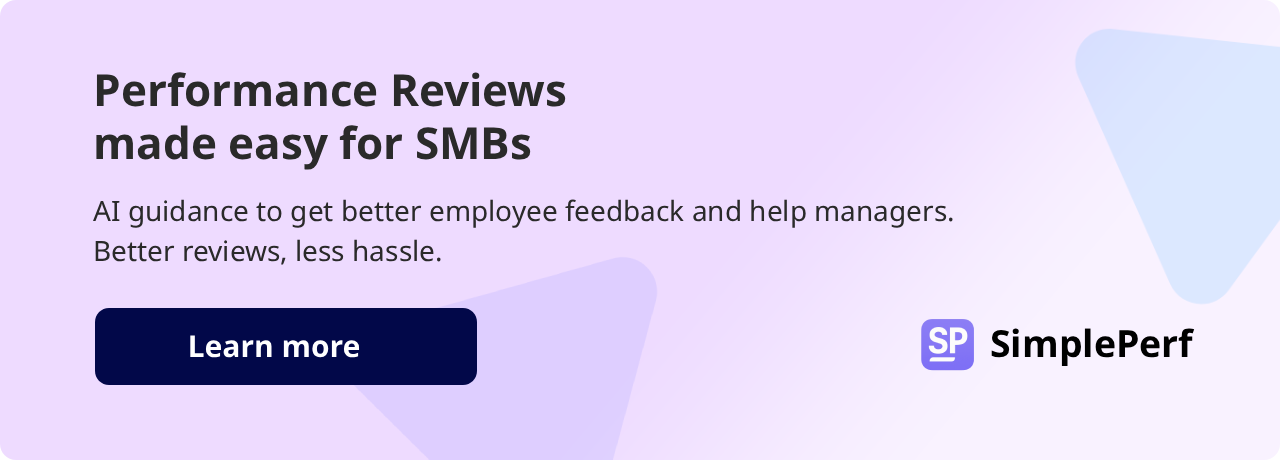
Quick Overview
A one-on-one meeting is a private conversation between two people, commonly a manager and an employee. The purpose is to discuss employee performance, career development, and provide constructive feedback on a personal level. This builds trust and a feeling of belonging.
Table of contents
- Top benefits of a one-on-one meeting
- Tips for conducting one-on-one meetings
- Setting up a 1:1 agenda (and sticking to it)
- Conclusion
- Frequently Asked Questions
Top benefits of a one-on-one meeting

1. Building strong and trustworthy relationships
In one study looking into how strong relationships help employees to flourish in the workplace, it was reported that there are four important components to flourishing, and feeling connected to others is one of them. It turns out that the connection built in 1-on-1s is good for employee development, meaningful conversations, and psychological safety.
It was also shown that across formal and informal settings, meetings foster support, sharing of feelings and experiences, and autonomy as employees feel listened to.
2. Increased motivation
Richard M. Ryan and Edward L.Deci, in their paper on self-determination and motivation, determined that in a real-world context, motivation is highly valued because of its consequences - that it causes people to produce results much better than they previously attained.
Employees whose motivation levels are self-authored and driven are more productive, see better career growth, and give valuable insights into workplace challenges because they are genuinely interested.
When managers can coach employees in 1:1 settings, highlighting their natural motivations and how they’re playing a part in the overall success of the team or company, then these employees go on to perform at even higher levels. This is because even intrinsic motivational tendencies require supportive conditions to flourish.
3. Greater career development

Employees who participate in performance reviews or employee feedback sessions that are geared towards their growth and the development of their career are more likely to show increased employee engagement and connection to the company's objectives. The reason for this is that people prefer to work for employers who show a personal interest in them and do not treat them as a means to an end, i.e., for the benefit of the company alone. [1]
When managers spend time discussing working relationships, how to improve communication, and show genuine interest in 1:1 meetings, it creates a positive note from which to discuss growth.
4. Honest and transparent communication
In 2024, a research paper revealed that effective communication is crucial in fostering the experience of inclusivity in employees. Open and transparent communication allows employees to share their ideas on work-life balance, feel heard, celebrate wins, and feel valued.
Managers who ask open-ended questions during 1:1 meetings and wait for employees to provide more insight are often seen as more caring, interested in their direct report, and able to have difficult conversations.
5. Higher employee engagement
Regular one-on-one meetings don’t just boost communication, motivation, and relationships. They also keep great people at your company. Gallup studies show that engaged employees have 78% absenteeism and have between 14-18% higher productivity.
Productive 1:1 meetings provide managers with fertile ground for ensuring employees stay locked into company values, the culture, and focused on performance objectives.

Tips for conducting one-on-one meetings

Getting the benefits you want from 1:1s is dependent on how you conduct the meetings. Benefits are like fruits that appear when you’ve given a tree the right nutrients, sunshine, and water. The following tips produce the benefits that make a real difference in the work environment.
- Schedule regular conversations. Whether bi-weekly meetings or monthly meetings - ensure consistency.
- Set a clear purpose for your meeting.
- Create and share an agenda for focused and goal-oriented discussions.
- Prepare adequately for the discussion.
- Have 2-3 conversation starters ready to get quickly into the flow of the meeting.
- Begin with updates on employee goals and challenges.
- Deliver feedback on employee performance and goal progress.
- Celebrate wins together.
- Before concluding your discussion, schedule the next meeting.
📖 More resources to help you implement these tips:
- Employee performance goals: Examples you can use right now
- How to prepare for a performance review as a manager: Beginner’s Guide
- Performance review tips for managers: Tips to keep in mind
💡 Turn tips into action with Simpleperf by BuddiesHR. Our platform provides ready-made 1:1 templates, automated reminders, and performance tracking—so your meetings deliver results.
Setting up a 1:1 agenda (and sticking to it)

A simple agenda turns a one-on-one from a ‘casual catch-up’ into a focused and powerful tool for giving feedback and receiving valuable insights.
The agenda should be a shared document that can be edited by both the manager and the employee before the meeting. This ensures a collaborative effort and builds a meeting that both parties want to have. As a general rule, allow employees 60-70% airtime, while you speak, coach, and ask questions for 30% of the time.
What to include:
- Rolling topics: Keep a running list so that unfinished items carry over, rather than disappearing.
- Timeboxes: Light guardrails stop status from swallowing the meeting.
- Balanced scope: Cover today’s work and long-term growth, not just updates.
- Clear outcomes: End with decisions, owners, and due dates - taking notes to ensure clarity.
Suggested timelines:
- Weekly/biweekly: 30 minutes suits most teams. Use short, sharp timeboxes.
- Monthly: 45–60 minutes adds space for a deep dive (strategy, feedback, development plan).
- If you’re short on time, discuss roadblocks, progress feedback, and growth.
1:1 Agenda Example (Monthly meeting)
A monthly 1:1 is your chance to zoom out from weekly status and focus on medium-term priorities, growth, and wellbeing. Each item is timeboxed to five minutes to keep momentum and ensure balanced coverage.
- Updates on current projects, tasks, deadlines, or goals (5 minutes)
- Progress on previous action steps (5 minutes)
- Challenges that have caused stumbling blocks to career goals (5 minutes)
- Professional career development opportunities (5 minutes)
- Professional career development opportunities (5 minutes)
- Recent achievements, wins, victories (5 minutes)
- Upcoming changes, projects, initiatives (5 minutes)
- Goal setting for next discussion (5 minutes)
- ‘How are you doing’ well-being update (5 minutes)
📝 Ready to put this into practice? Use our free 1:1 Meeting Agenda Template to run your next monthly check-in with confidence—pre-filled timeboxes, prompts, and a running log included.
1:1 Agenda Example (Weekly meeting)
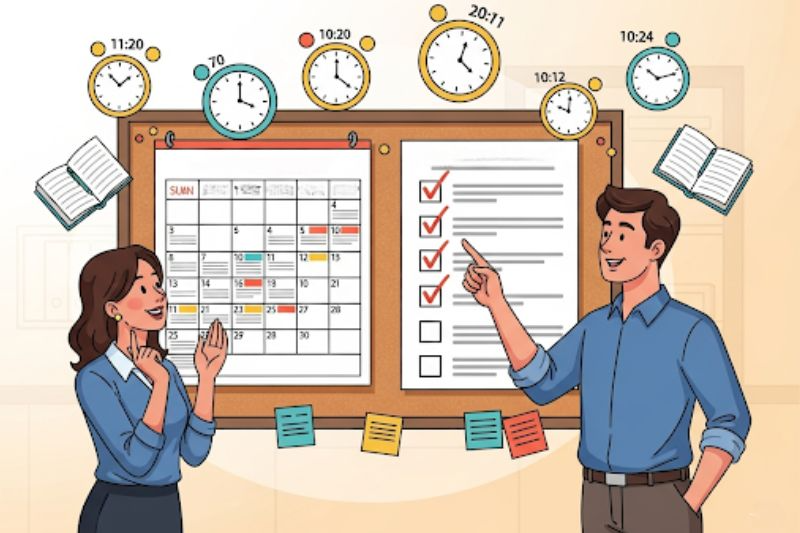
A weekly meeting is designed to maintain momentum, resolve blockers quickly, and provide immediate support.
- Personal check-in (3 minutes)
- Key priorities and current projects (7 minutes)
- Road blocks and support needed (7 minutes)
- Feedback exchange (5 minutes)
- Wins and recognition (3 minutes)
- Next steps (5 minutes)
Final Thoughts
One-on-one meetings make sense when you understand the benefits you get from them. In short, they increase motivation, drive productivity, and employees grow faster when they get frequent feedback.
Step away from concerns about time-consuming meetings that don’t add value, and step into the bigger picture with structured 1:1 meetings that really work. If you want to automate the process with powerful tools, choose dedicated performance review software that will reduce the paperwork and organizing time, leaving you free to have meaningful conversations. 👇
💡 Great 1:1s drive growth, trust, and productivity. Let Simpleperf handle all the admin so you can focus on coaching for success. With integrated AI prompts that make your feedback more valuable. Create your first review now.

Frequently Asked Questions
1. Do I say 1-to-1 meeting or 1-on-1 meeting?
Both of these versions are correct; however, 1-on-1 is commonly used in American English, and 1-to-1 is used in British English or formal contexts. One-on-one is more conversational, whereas one-to-one suggests professional or academic contexts.
2. How do you say a one-to-one meeting?
You can say it either as “one-on-one meeting” (American English) or “one-to-one meeting” (British English). Both mean the same thing: a private meeting between a manager and their employee.
3. What do you talk about in a one-on-one meeting?
In a one-on-one meeting, you can discuss performance progress, career development, support needs, and relationship building. It is intended to create a personal connection and more productive conversations.
4. What is another name for a 1-on-1 meeting?
A 1-on-1 meeting can also be called a check-in, review meeting, 1:1s, 121s, or coaching meeting. Any meeting held exclusively between two people, with a clear objective in mind, qualifies to be called a one-on-one.
5. How often should managers hold one-on-one meetings
The frequency of 1:1 meetings depends on team needs and workload, but most experts recommend weekly or biweekly check-ins to maintain trust, alignment, and momentum. Weekly 1:1s are ideal for fast-moving projects or new team members, while biweekly may work for more experienced employees who are already in rhythm.
References:

